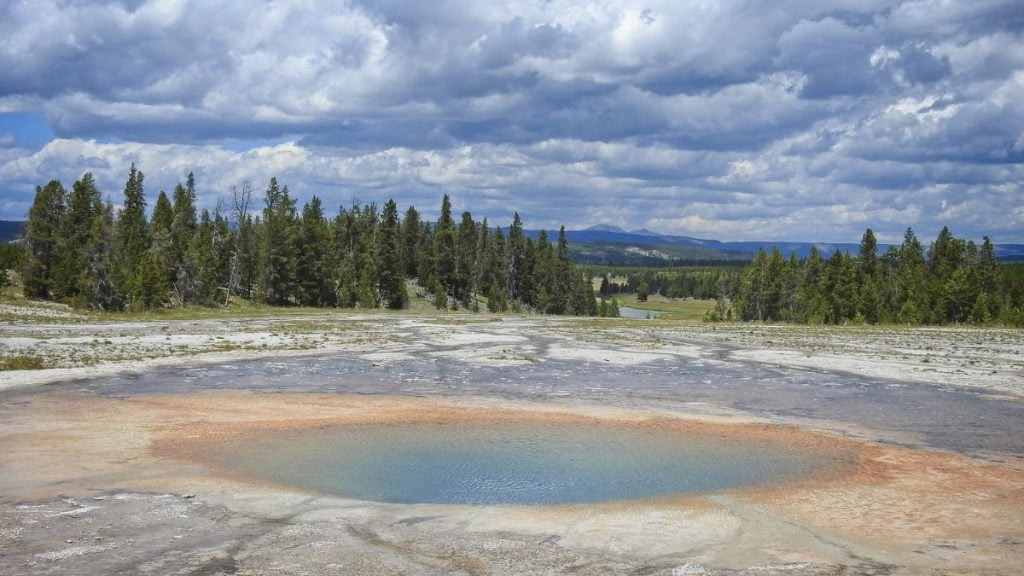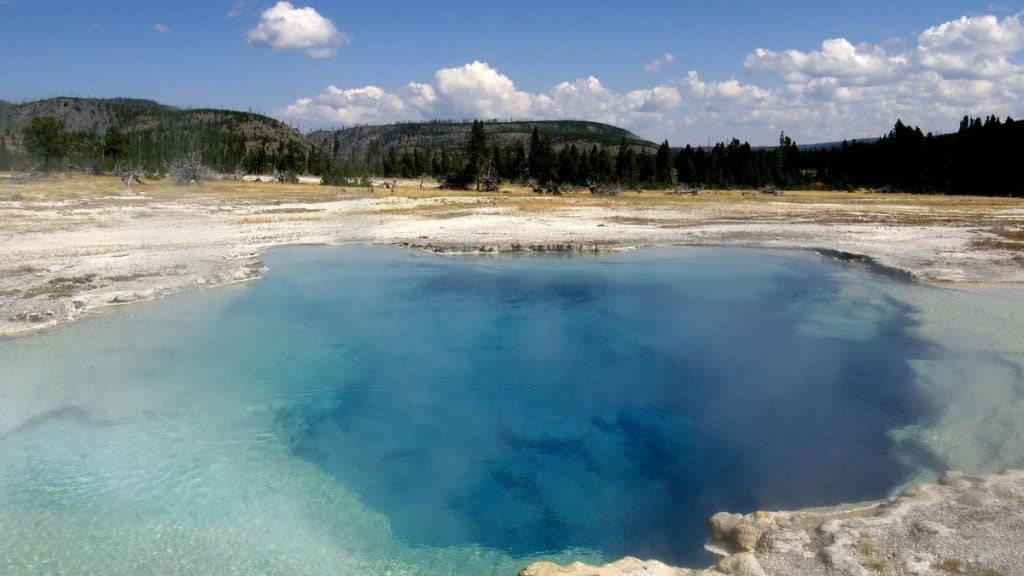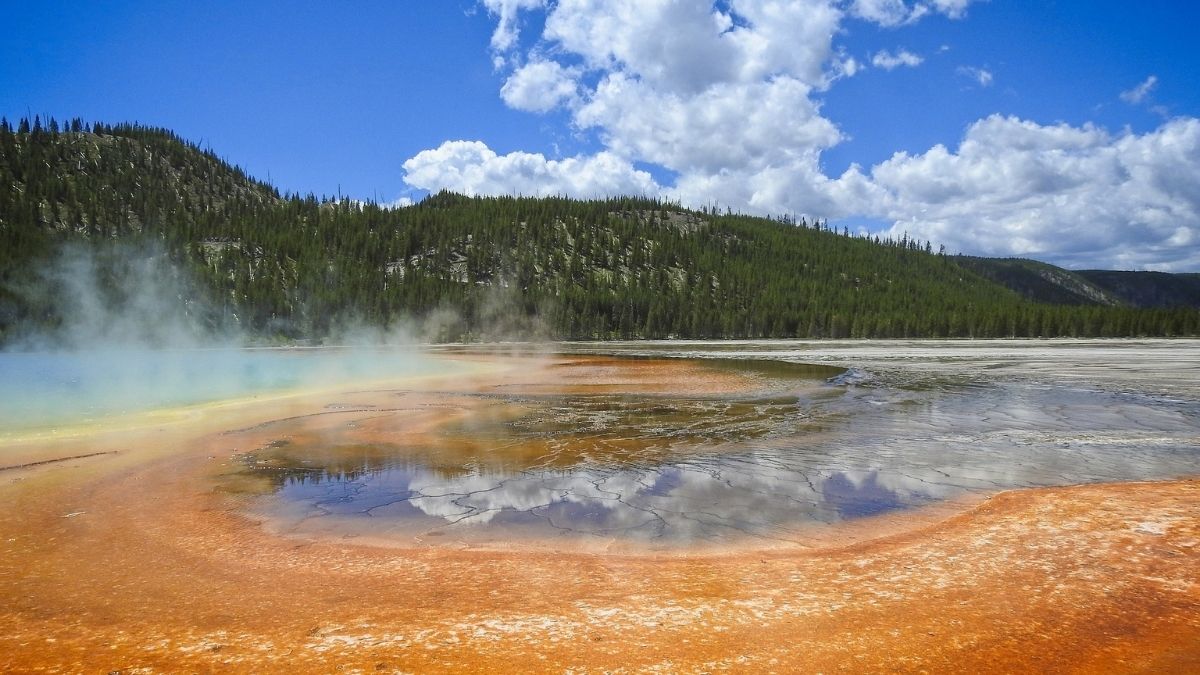Yellowstone National Park is an American national park in the western US, primarily in Wyoming’s northernmost part as well as widening into Montana as well as Idaho. On March 1, 1872, President Ulysses S. Grant signed the bill into law after it had already been formed by the United States Congress. Yellowstone was just the first national park in the US and therefore is generally acknowledged as even the planet’s first national park. The park has always been well-known for its native animals as well as numerous geothermal characteristics, particularly the Old Faithful geyser, which is the one of the most famous. While this contains a variety of biomes, the subalpine trees has been the most plentiful. It really is located within the South Central Rockies forest areas ecoregion.

Where is Yellowstone National Park Located?
It really is primarily located in northwestern Wyoming, but also in southern Montana as well as eastern Idaho, and also has the world’s largest density of hydrothermal functionalities. Now you know how to answer if someone asks where is Yellowstone National Park located.
How big is Yellowstone National Park?
Yellowstone National Park is the size of two states in the United States. Yellowstone is significantly bigger than that of the states of Rhode Island as well as Delaware blended at 3,472 square miles (upwards of 2.2 million acres). The overwhelming majority of its own land seems to be in Wyoming, but that also extends into Montana as well as Idaho.
Which part of Yellowstone is in Wyoming?
Yellowstone National Park is located in three states, despite the fact that its registered residence seems to be in Wyoming. The large proportion of Yellowstone National Park (96 percent) is located in Wyoming. Montana has a small proportion of said park (3%) towards the northern parts. As well as, towards the west, a tiny fraction of the park (1%) is within Idaho. Now you know how to answer if someone which part of Yellowstone is in Wyoming.
What is special about Yellowstone National Park, Wyoming?
Whereas the Native Americans had also resided there in Yellowstone area for at least 11,000 years, structured investigation did not take place until about the late 1860s, however apart from trips by mountain people throughout the early-to-mid nineteenth century. The park was initially managed and controlled by the United States Department of the Interior, with Columbus Delano serving as the very first Secretary of the Interior to oversee that as well. Nevertheless, for both 1886 and 1916, the United States Army had been appointed to start managing Yellowstone for such a 30-year period.

The park’s management has been transmitted to the National Park Service, which has now been established the prior year. Large numbers of structures have already been constructed and therefore are kept safe for their own cultural and architectural symbolic importance, and much more about one thousand historical sites have indeed been investigated. Yellowstone had also been declared a UNSCO World Heritage Site in 1978.Each year and, wildfires rage inside this park; during the 1988 massive forest fires, well almost one-third of the park had been destroyed.
Yellowstone National Park protects over 10,000 hydrothermal highlights, including hot springs, mud pots, fumaroles, travertine terraces, and, of course, geysers. Those same aspects are home to thermopiles, which are microorganisms that love warmth as well as contribute to the park’s vivid colors.
Weather of Yellowstone National Park
Yellowstone’s weather is unpredictable because the majority of the park would be at an altitude of 6,000 feet (1829 m) and perhaps even higher above sea level. Brings a luxurious jacket, rain gear, as well as plenty of layers no matter when you want to go. Average temperatures from 30°F to 60°F (0°C to 20°C) throughout the day, to nighttime average levels in the teens to low double digits (-5°C to -20°C). Snowfall seems to be prevalent with in spring and autumn, with 24 hrs buildup of 12 inches (30.5 cm).
At different levels, average temperatures do seem to be frequently approximately 70°F (25°C) as well as, on rare occasions, 80°F (30°C). Temperature changes might very well fall below chilling at high altitudes during the sundown. Afternoon rainstorms all seem to be prevalent. All through the day, average temperatures from 0°F to 20°F (-20°C to -5°C). Temperature changes below zero seem to be prevalent, especially late at night as well as at higher latitudes. The extremely cold highest temperature recorded is -66°F (-54°C). Snowstorm has always been hugely unpredictable. Although the average precipitation would be 150 inches (381 cm), higher elevations frequently receive half of that amount.
Facts about World Heritage Plitvice Lakes National Park in Croatia

